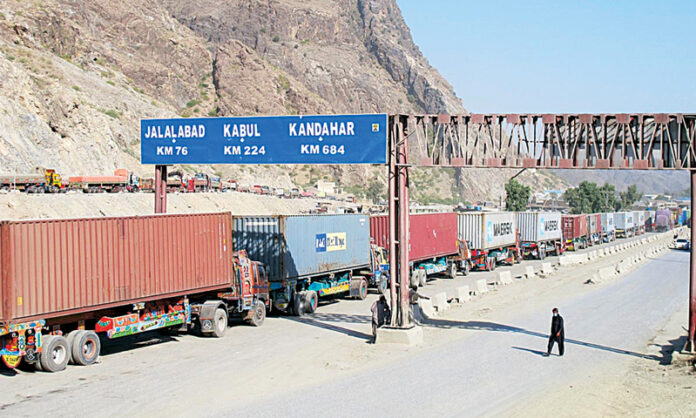In the rugged terrains of South Asia, where the borders of Pakistan and Afghanistan intersect with the ancient Silk Road, a story of strained relations unfolds. Both nations, each with a rich heritage of history and culture, have traversed a complex path marked by disputes and tensions. Yet, beneath the surface of these historical conflicts lies an opportunity that could reshape their futures, one that involves looking towards the Central Asian Republics and exploring new economic avenues with neighbouring countries, including India.
The roots of Pakistan and Afghanistan’s strained relations are deep and multifaceted. Historical grievances and political disputes have created a labyrinth of animosity. The Durand Line, a relic of colonial demarcation, has been a persistent source of friction. This border, drawn by the British in 1893, was never fully accepted by Afghanistan, and it continues to be a contentious issue. The Soviet-Afghan War, which saw Pakistan supporting Afghan Mujahideen against Soviet forces, further complicated matters, leaving a legacy of mistrust. The aftermath of the 9/11 attacks and the subsequent War on Terror introduced new dimensions to their fraught relationship, with accusations and mutual blame adding to the burden.
However, amid these complexities, an opportunity arises from the rich resources and strategic positions of the Central Asian Republics. These nations, Kazakhstan, Uzbekistan, Turkmenistan, Kyrgyzstan, and Tajikistan, are endowed with vast reserves of gas and energy. Their geopolitical significance and resource wealth present a chance for Pakistan and Afghanistan to forge new alliances and bolster their economies. With a burgeoning population and growing energy needs, Pakistan finds itself at a critical juncture. Its economy, while vibrant, suffers from energy shortages that hinder industrial growth and overall development. The CARs, with their vast natural gas reserves, offer a potential solution. Establishing energy ties with these countries could help alleviate Pakistan’s energy crisis. Projects such as the Turkmenistan-Afghanistan-Pakistan-India (TAPI) pipeline represent a strategic step towards integrating Central Asian resources into Pakistan’s economy. This pipeline, designed to transport natural gas from Turkmenistan through Afghanistan to Pakistan and India, has the potential to provide a stable energy supply and foster regional cooperation.
For Afghanistan, the path is equally promising. The country’s strategic location makes it a crucial transit route for Central Asian energy exports. By positioning itself as a key player in the energy transit sector, Afghanistan can leverage its geographical advantages to accelerate its own economic development. The potential revenue from transit fees and increased investment could provide much-needed resources for rebuilding and stabilizing the nation. Building stronger economic ties with Central Asia also opens the door to broader trade opportunities. Both Pakistan and Afghanistan can benefit from integrating into the regional trade networks that span Central Asia. The development of trade routes connecting these countries with the Central Asian markets could stimulate economic growth and provide new avenues for commerce.
Improved connectivity could facilitate the export of Pakistani textiles and agricultural products to Central Asia, while Afghanistan could benefit from increased trade in minerals and other resources. Yet, the potential benefits of these economic opportunities are not just limited to energy and trade. The growing economic interdependence could also contribute to political stability and foster a more collaborative relationship between Pakistan and Afghanistan. As both nations work together to harness the resources and opportunities offered by Central Asia, they may find common ground and shared interests that could pave the way for a more constructive and peaceful relationship.
India, as a key regional player, also figures prominently in this evolving narrative. Despite the historical tensions between Pakistan and India, there is an opportunity for collaboration that could benefit all parties involved. The TAPI pipeline, which involves India as a major stakeholder, represents a chance for India and Pakistan to work together on a project of mutual benefit. By participating in this venture, both countries could gain access to new energy sources and enhance their economic prospects. Expanding trade ties between Pakistan, Afghanistan, and India could further contribute to regional stability and prosperity. Increased economic interaction has the potential to foster better diplomatic relations and reduce tensions. Trade agreements and economic partnerships could serve as a foundation for improving bilateral relations and addressing long-standing disputes.
Leveraging the resources and trade opportunities offered by the CARs and engaging India in regional economic initiatives could further enhance peace and development prospects. The future of the Pakistan-Afghanistan border hinges on the potential transformation that could arise from redrawing energy routes and leveraging economic opportunities through Central Asia and neighbouring countries, a crucial step for achieving both economic and regional stability.
Central Asian Republics (CARs) offer Pakistan and Afghanistan unique opportunities to enhance economic stability and foster regional cooperation. Their energy resources and strategic positioning can reshape relationships with Central Asia, neighbouring countries, and India. By working together, Pakistan and Afghanistan can embark on a journey towards a more harmonious and prosperous era. A strategic framework is needed to formalize informal bilateral trade and strengthen state-to-state relations, while integrating the CARs and India.
The Pak-Afghan relationship is critical for regional peace and stability. Both countries must embrace their unique identities and regional roles, resolve disputes swiftly, and align their political interests. Effective cooperation is essential for achieving durable peace, and including Pakistan in these efforts could significantly contribute to long-term stability.
Leveraging the resources and trade opportunities offered by the CARs and engaging India in regional economic initiatives could further enhance peace and development prospects. The future of the Pakistan-Afghanistan border hinges on the potential transformation that could arise from redrawing energy routes and leveraging economic opportunities through Central Asia and neighbouring countries, a crucial step for achieving both economic and regional stability. By embracing the opportunities offered by Central Asia’s resources and forging new trade partnerships, both nations can chart a path towards a more prosperous and stable future. The journey will necessitate overcoming past grievances and fostering trust, yet the potential rewards could be substantial.























